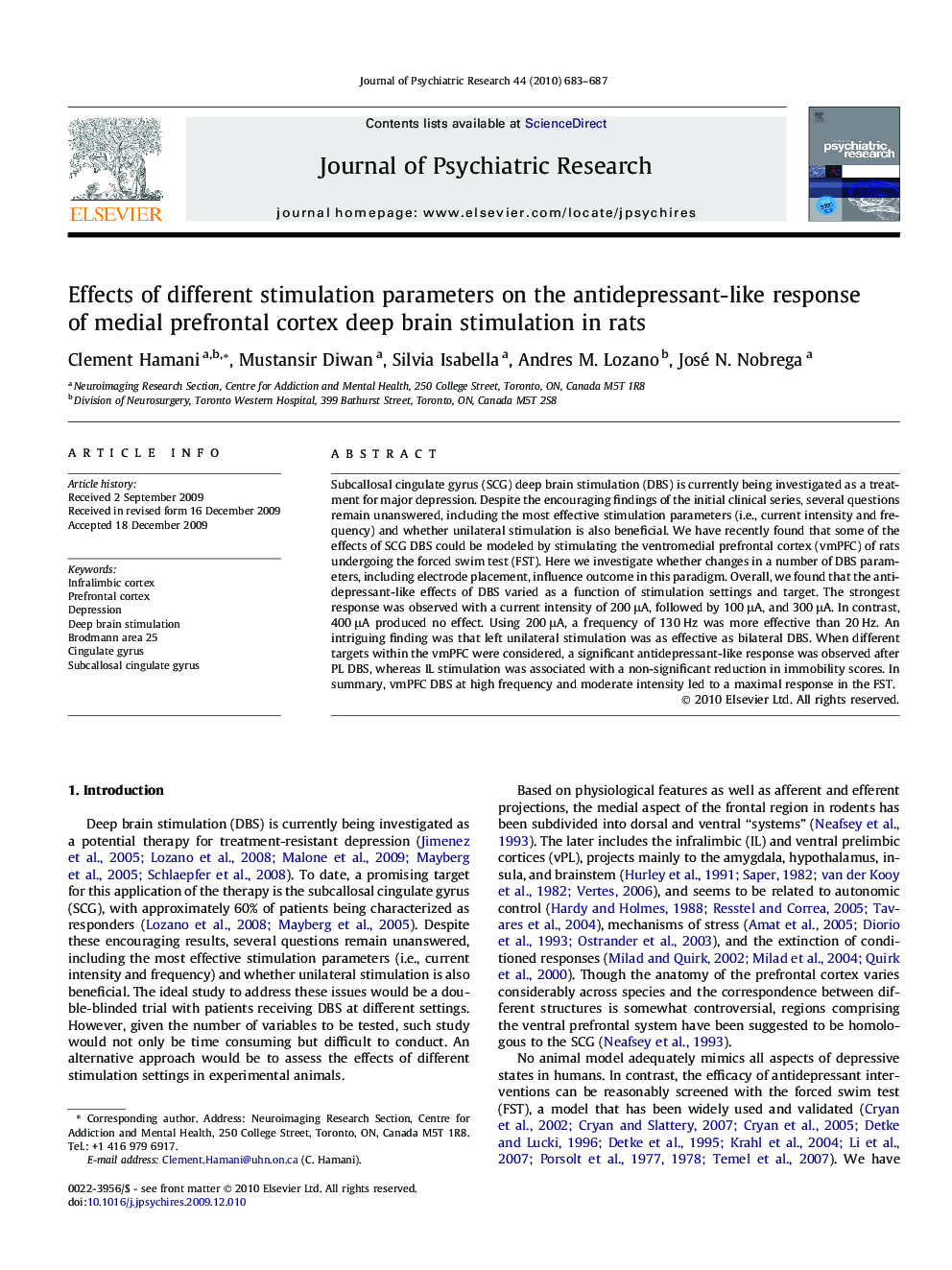| Article ID | Journal | Published Year | Pages | File Type |
|---|---|---|---|---|
| 327137 | Journal of Psychiatric Research | 2010 | 5 Pages |
Subcallosal cingulate gyrus (SCG) deep brain stimulation (DBS) is currently being investigated as a treatment for major depression. Despite the encouraging findings of the initial clinical series, several questions remain unanswered, including the most effective stimulation parameters (i.e., current intensity and frequency) and whether unilateral stimulation is also beneficial. We have recently found that some of the effects of SCG DBS could be modeled by stimulating the ventromedial prefrontal cortex (vmPFC) of rats undergoing the forced swim test (FST). Here we investigate whether changes in a number of DBS parameters, including electrode placement, influence outcome in this paradigm. Overall, we found that the antidepressant-like effects of DBS varied as a function of stimulation settings and target. The strongest response was observed with a current intensity of 200 μA, followed by 100 μA, and 300 μA. In contrast, 400 μA produced no effect. Using 200 μA, a frequency of 130 Hz was more effective than 20 Hz. An intriguing finding was that left unilateral stimulation was as effective as bilateral DBS. When different targets within the vmPFC were considered, a significant antidepressant-like response was observed after PL DBS, whereas IL stimulation was associated with a non-significant reduction in immobility scores. In summary, vmPFC DBS at high frequency and moderate intensity led to a maximal response in the FST.
